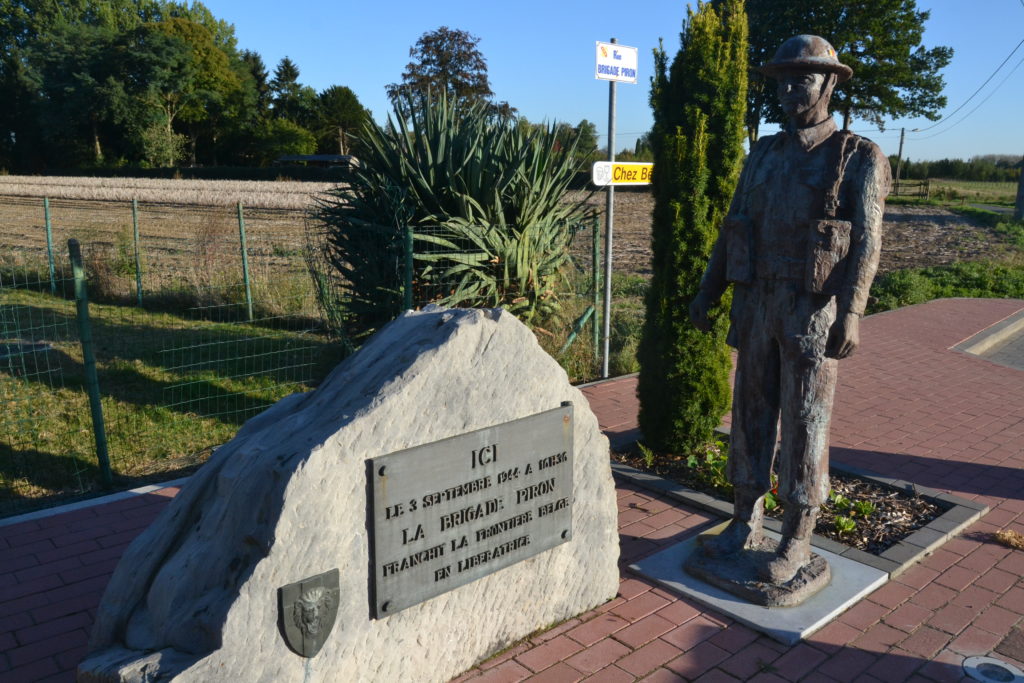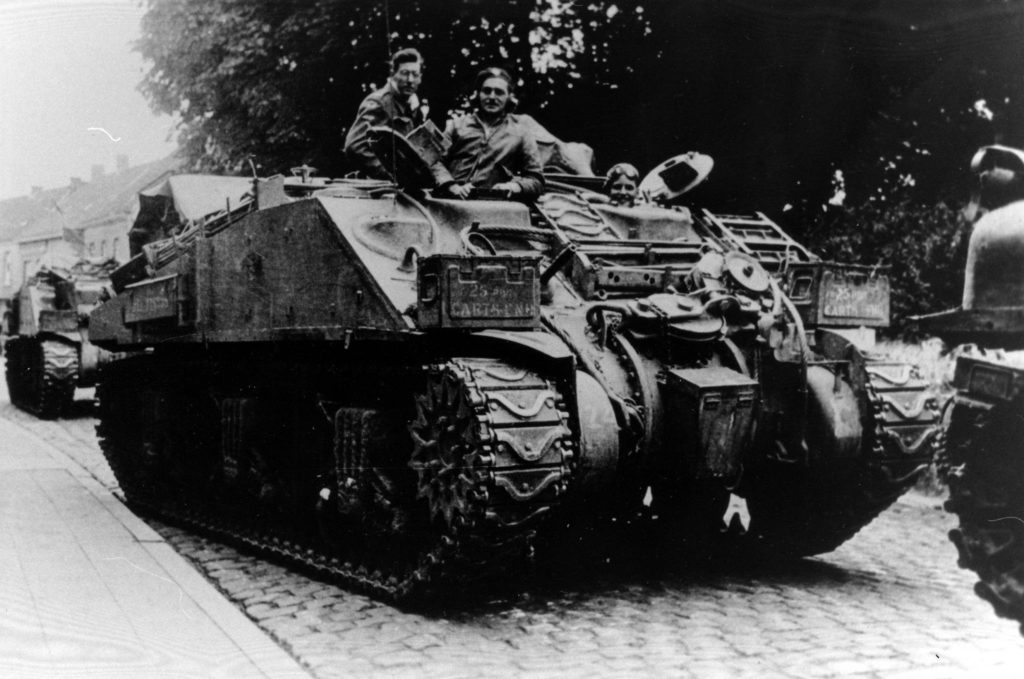Apart from the actions carried out by the armed resistance forces in September 1944, Belgium’s strictly military contribution to its Liberation was rather minimal. It was personified by the First Belgian Group, later known as the “Brigade Piron” after its commanding officer, Colonel Jean-Baptiste Piron (1896-1974).
With nearly 2,000 men and 500 vehicles, this unit which was formed and armed by the British and had been fighting in Normandy since 7/8 August 1944, contributed to the rescue of Cabourg, Deauville and Honfleur only suffering light losses. It operated under the command of the 49th (West Riding) Infantry Division. At the end of August, the brigade joined the XXXth Corps (General Horrocks) and, thanks to deft British diplomacy, was associated with the liberation of Belgium as it accompanied the Guards Armoured Division on its way to Brussels. The brigade crossed the border at Rongy (Hainaut), now part of the municipality of Brunehaut, on 3 September 1944. This small unit would continue on its way to the capital via Ath and Enghien, wildly applauded by the locals.
If Jean-Baptiste Piron’s birthplace, Couvin, has become – albeit indirectly – one of the main “sites of memory” for this formation, Rongy still has a “Rue de la Brigade Piron”, with a stele commemorating the place where the Belgian troops crossed the border. It states: “Here, on 3 September 1944, at 4:36 p.m., the Piron Brigade crossed the border as liberator”. Since September 2014, the 70th anniversary of the Liberation, this stele has witnessed the erection of a bronze statue in its vicinity representing a “Belgian” soldier equipped in the English style; a final, pious gesture of the brigade’s last survivors in honour of their memories and deceased comrades.

With the help of Fédération Wallonie-Bruxelles and in partnership with CEGE-SOMA.


